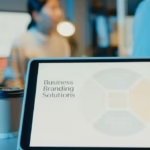The Web has gotten to be a portion of everyone’s life. Some people are unable to see the screen, and others are unable to hear it. A few individuals do not indeed have a quick web or a modern gadget. So, in 2025, a site ought to be outlined to be open and simple to utilize for everybody. Each sort of client can benefit from a comprehensive and inclusive website. It is possible to make such a website accessible to everyone.
Digital access is everyone’s right and should not be denied. Technology is for everyone, not just one person. The comprehensive website has become a hallmark of digital equality in 2025. Everyone should have equal opportunities on the web. Inclusive websites also increase business reach. Everyone’s digital needs are different, so every website should be built keeping all these issues in mind.
Think about it all
A comprehensive website should be simple and clear for everyone. Every user interacts with a website differently. Some people use screen readers or keyboards. Planning a site that works for everybody is vital. Colors, textual styles, and buttons ought to be clean and reliable. A lightweight design performs well even on slow internet. More people will utilize the website if it is easy to use and readable. Inclusive design is good for both business and branding.

No user should have difficulty understanding the website. A user-friendly website increases loyalty and trust. Access should meet everyone’s needs. The thinking of all types of users should be included in every design. Such websites also convey a message of social responsibility. Taking user feedback improves design. Peace and tranquility are fundamental for everybody.
Follow the rules
There are important rules to follow while creating a website. WCAG guidelines help in design. These include alt text, color contrast, and keyboard access. The contrast between text and background should be good. Everything should be simple and easy to access. These rules make the website safe and usable. Their implementation is essential to avoid legal problems.
- The SEO ranking of the website improves.
- Users have more trust in the website.
- Inclusive design is for everyone.
- Developers should be aware of these rules.
- The website works well on every device.
- Rules should be checked during testing.
- For updates, you should monitor the webpage.
- Guidelines make the site accessible and simple.
Make it mobile friendly
Most people open websites only on mobile devices. The website ought to work well on each screen size. The plan ought to be responsive so that it fits phones and tablets. Buttons ought to be huge enough to tap effectively. A website should load quickly, or else users leave. Google ranks mobile-friendly sites highly. If the layout is simple and scrolling is smooth, users stay longer. Compressing images and removing unnecessary code is important.
The mobile layout should be clutter-free and easy to read. Touchscreen support should also be part of the design. Optimizing for slow internet users is also important. Mobile-first design improves user experience. Mobile optimization increases user engagement. Every screen size must be tested. Every element should be finger-friendly so it is easy to use. The navigation menu on mobile screens should be simple and clear.
Describe the image
Each image should have a brief description. This is called ALT text for screen readers. If someone cannot see a picture, they must understand it by listening. Simple alt text that explains the image’s purpose is ideal. It is also helpful for SEO. Compressing images is good practice for speed. All visual content should be accessible to everyone. Image description makes the website comprehensive. Alt content adds meaning and structure to a site.

Text-based depictions offer assistance to outwardly impeded individuals. A good image description improves SEO rankings. Visual content must be communicated to every user. Both image quality and size should be considered. Image captions also help with understanding. The image’s context and position should be obvious. Alt text for icons and graphics is also important.
Run from the keyboard
A website should be easy to navigate without a mouse. Every link and form should be accessible with keyboard keys. A “Jump to content” option helps quick access. Keyboard access makes the website friendly for everyone.
- Keyboard-friendly forms and buttons
Forms and buttons should be keyboard-friendly. Each shortcut should be smooth and easy to understand. Keyboard access allows all users to use the website. Keyboard-friendly forms allow people to complete tasks quickly and easily.
- Testing and navigation
A keyboard-driven website is accessible to everyone. Keyboard navigation should be tested on every page. Avoiding keyboard traps is an important part of the design. Testing shows that all links work properly.
- Access and Consistency
Keyboard shortcuts help users. Every interactive element should be accessible from the keyboard. Continuous navigation is very important for keyboard users. Consistent design helps users understand a website.
- Information and Controls
All information should be easily readable from the keyboard. Every button and link should be able to be activated from the keyboard. Accessibility standards support keyboard usage.
Subtitles in video
Subtitles are required for video content. A few individuals cannot listen or are in a loud zone. Subtitles make it less demanding to get the meaning of the video. It is too great to give a transcript for the sound. Subtitles improve accessibility in multiple languages. They also help with SEO. Subtitles make the user experience clear and friendly. Every user can benefit from video content. Closed captions move forward both engagement and availability.

Including video substance is, moreover, great for branding. The video player ought to be available and simple to control. Video quality should be good for slow internet connections. Every video should have caption options. Subtitles should look good with background colors. Adjusting caption text size should be under user control.
Easy language
Content should always be simple and understandable. Long and complex sentences confuse users. Simple and clear language helps everyone understand. Short sentences make reading easier and faster. Difficult words should always be avoided. Supporting multiple languages is also helpful. If the content is clear, screen readers can understand it easily. Friendly content makes the website more comprehensive.
Clear language increases confidence and focus. Simple words enhance the brand voice. Simple language also improves SEO rankings. Content should be accessible to every user. Simple language helps search engine bots understand content. Each page’s content should be organized logically. Simple words reach more people easily. Bounce rate reduces due to ease of understanding. Plain language is equally important for every user.
Check out the website
The website should be checked frequently. Availability apparatuses like Beacon and WAVE ought to be utilized. These instruments offer assistance to distinguish and settle mistakes. Accessibility testing must be performed after every update. Taking feedback from users helps improve the website. Regular testing increases reliability and reduces bugs.
- Use of accessibility tools
Each section should be tested with different tools. Both manual and automated testing are important. With these tools, website problems can be caught early. Creating and implementing checklists makes testing easier.
- Performance and updates
It is important to monitor the performance of the website. The website should be kept updated with new technology. Fixing bugs and errors on time keeps the site running smoothly. Website code should be clean and optimized. Slow-loading pages annoy users, so speed should be optimized.
- User base and security
Testing increments the website’s client base. Ceaseless observing keeps the site quick, secure, and safe. It keeps the website reliable at all times. Security tests are necessary to protect the website from hackers. Users trust a secure website and spend more time on it.
Collecting user feedback
After creating a website, it is important to get feedback from people. This lets you know how smoothly the website is running. People express their problems and ideas. This helps improve the website. By taking feedback, users feel their views are considered. A good website always listens to its customers. Taking regular feedback improves design and functionality. Understanding customer needs makes a website successful.

New features can come from user feedback. Feedback shows what is lacking in the website. It is important to get feedback after every update so the site can be improved. Online surveys or polls can gather feedback. User testing sessions also help improve the website. Feedback improves website usability. Users help others by sharing their experiences. Updating the website according to user feedback improves its quality.
Conclusion
Building inclusive websites has become part of the digital age in 2025. Everyone should have equal access to online content. Simple and accessible websites suit all types of users. Such websites increase trust and traffic. Both business growth and customer satisfaction improve. Every brand should focus on holistic and inclusive design. Now is the time when websites should be designed for everyone. Convenience and accessibility have become the future of the web. Every developer and designer should adopt this approach.
Creating inclusive websites brings digital equality to society. It is important to include everyone equally in the digital world. Inclusive design benefits a global audience. Understanding and meeting everyone’s needs is part of professionalism. Inclusive websites also strengthen brand image. Ignoring accessibility can hurt business. It is important to understand the importance of each person in today’s digital world.











